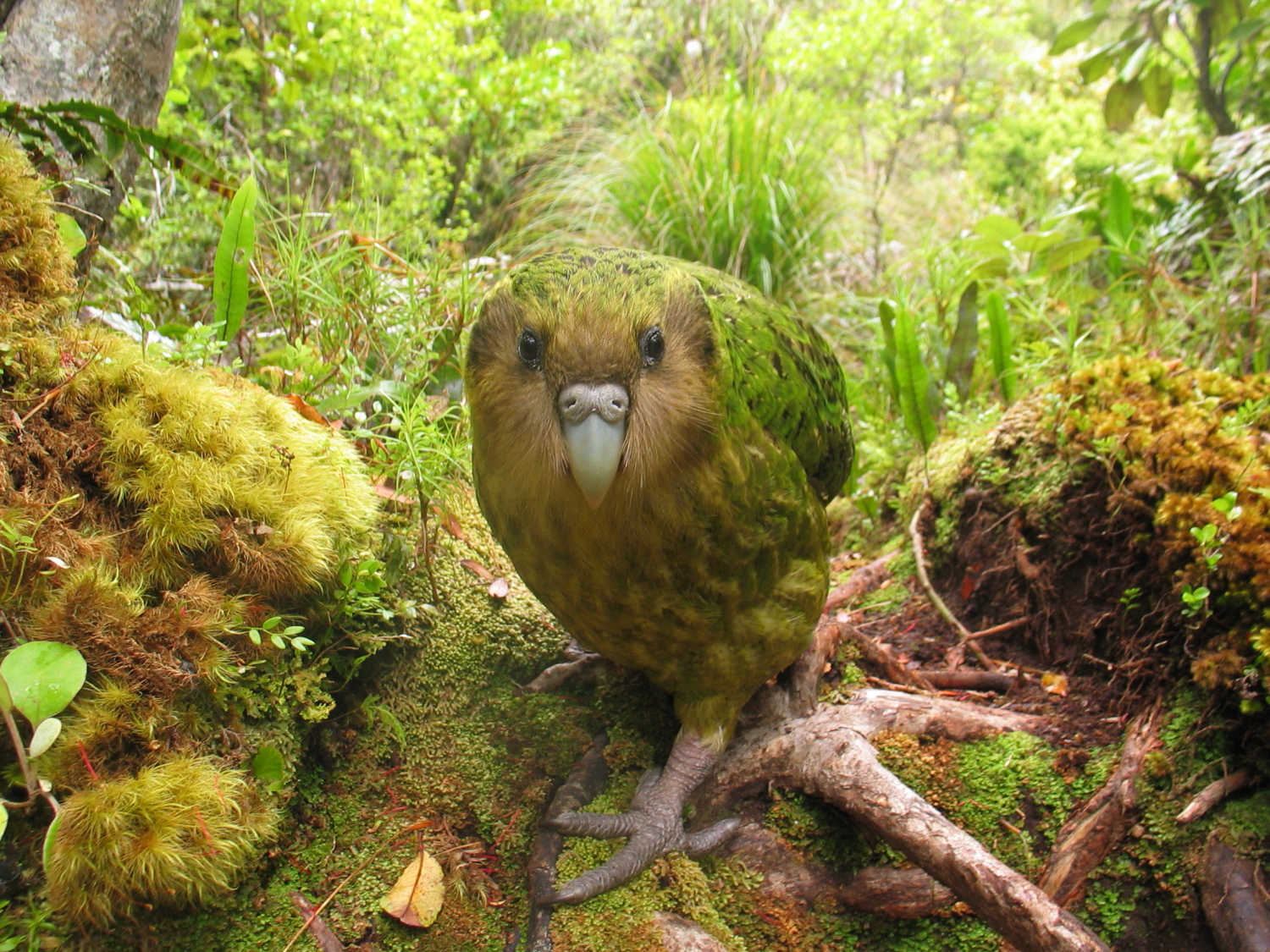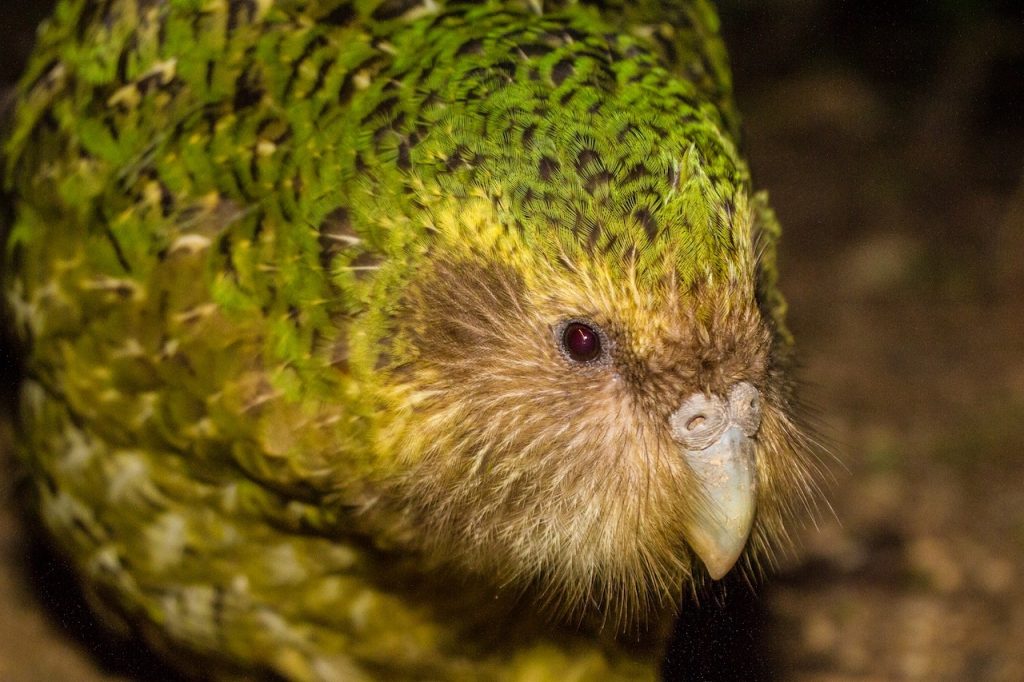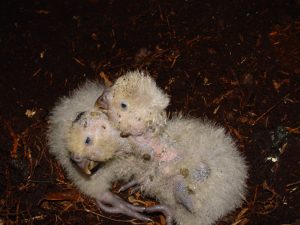Before human settlement, the forests of New Zealand were full of Kakapos, meaning ‘night parrot’ in the Maori language. These bizarre birds are unlike any other parrot species in the world – they are flightless, solitary and nocturnal. They are also incredibly heavy for a parrot, weighing up to 4kg. They are the longest living bird species, reaching ages of 90 years or more. They run along the forest floor and climb tress using their strong beaks. The kakapo is a unique species, being the only member of its own subfamily, Strigopinae, making it number 9 on the EDGE top 100 birds list.

This incredible species was once important in Maori culture, but the arrival of western settlers put this species in severe danger. With their arrival came domesticated animals and land predators previously unknown to the kakapos which, being flightless, proved to be very easy prey for these new species.
By the 1970s, the population had become so low that it was commonly thought the species would not recover. However, the tides changed in 1977 when an isolated population of 200 individuals was found on Stewart Island, a place free from ferrets and weasels, although the population was declining due to feral cat predation.
Following this astonishing discovery, an intensive breeding programme was set up at several remote island refuges free from mammalian predators and run by volunteers and scientists devoted to seeing this species survive after being on the brink of extinction for so long. The remaining Stewart Island kakapos were relocated to these islands.


Kakapo breeding is unusual to say the least. They are the only parrot species to breed in leks, where the males gather and perform to the watching females. The males inflate their thoracic air sacs to emit a loud booming call to attract females (you can listen to their call here). This can last every night for 3 months during the breeding season. The females then choose which males to mate with, producing between 1 and 4 eggs. Parental care is undertaken solely by the female. Being nocturnal, kakapos have low levels of vitamin D, so the females feed their chicks on vitamin D rich berries from the rimu tree. However, these trees only produce fruit every three years, meaning kakapo breeding is confined to those years. Such a low reproductive rate makes intensive breeding programmes all the more important.
These programmes have proved successful despite setbacks and very slowly the population has increased to 151 individuals. If this success continues, there may be a future for this incredible EDGE species despite all odds.